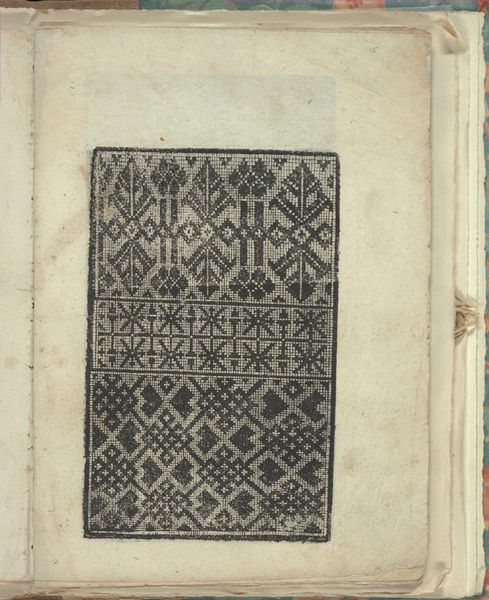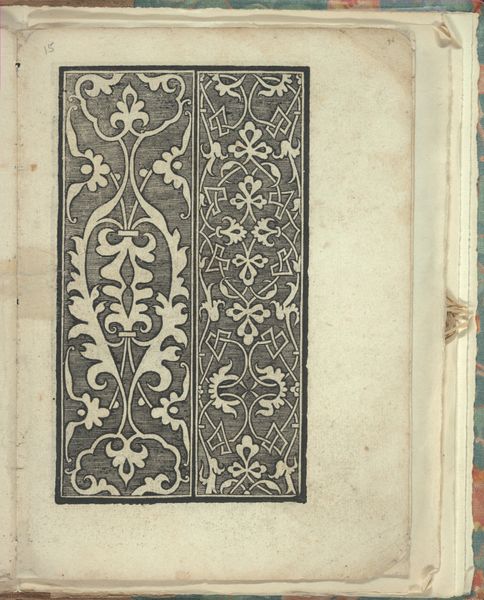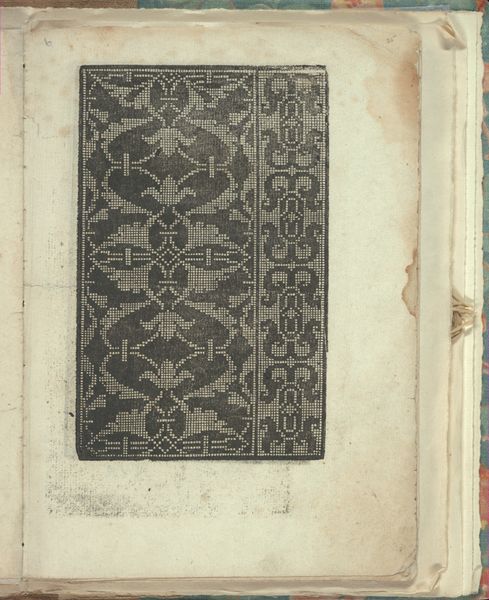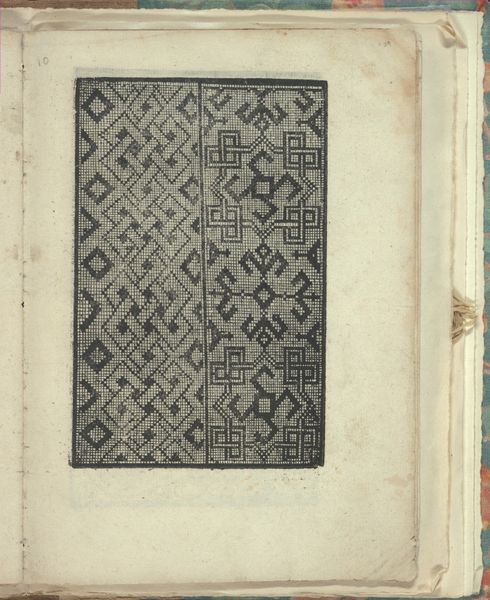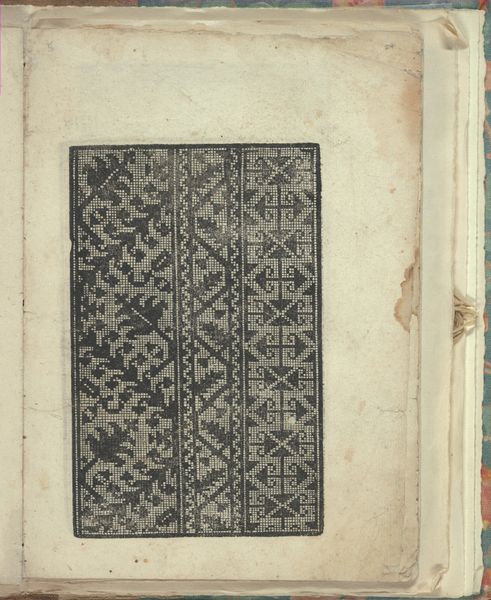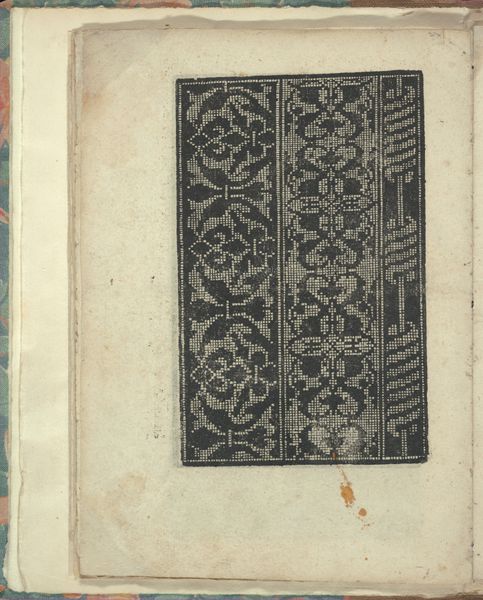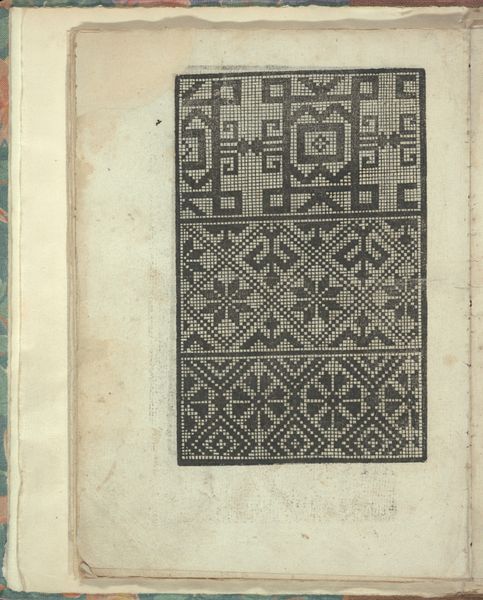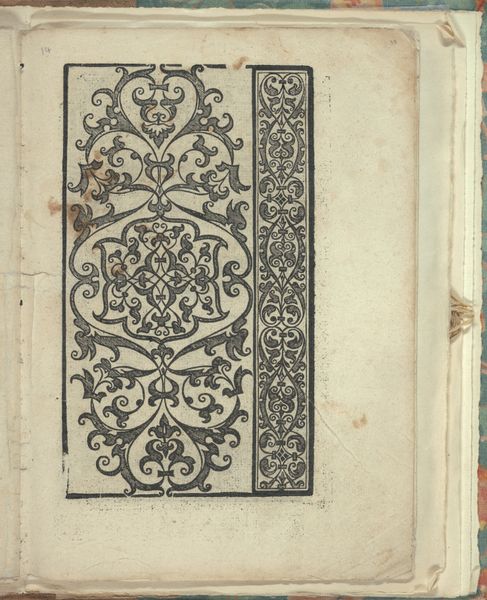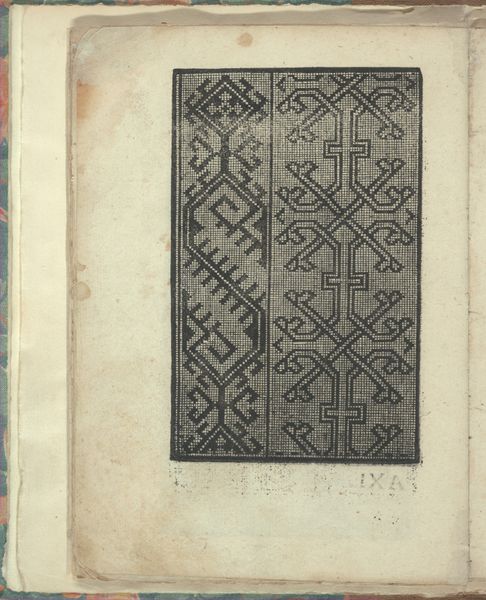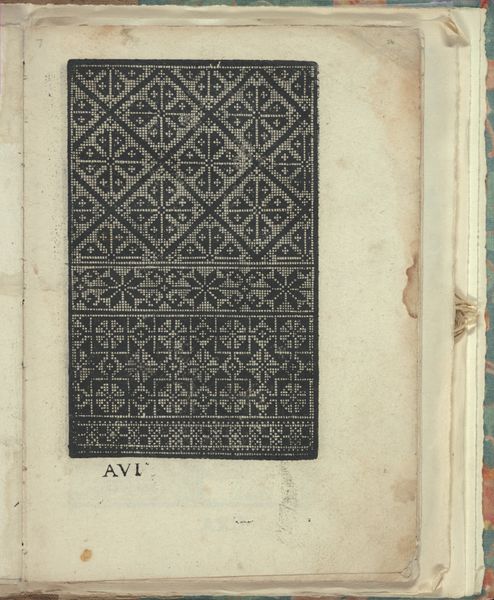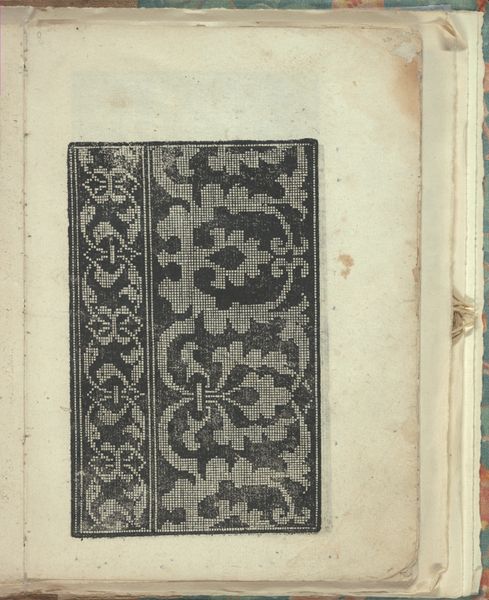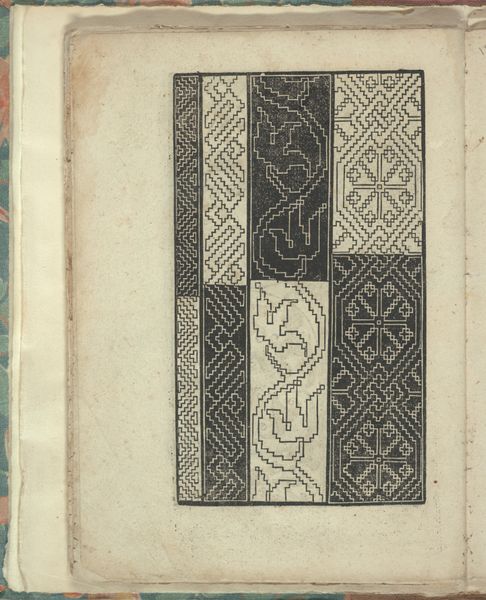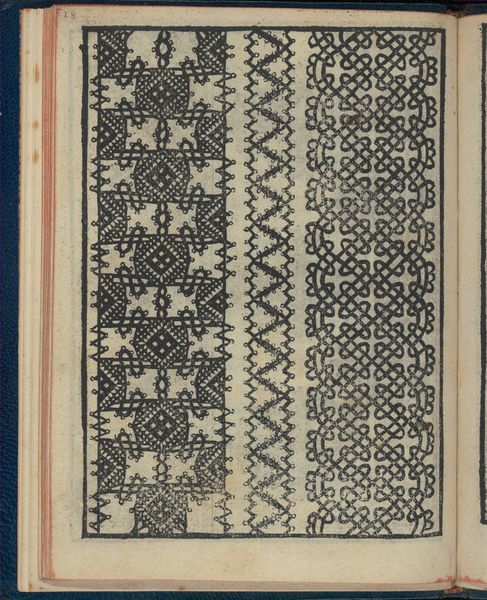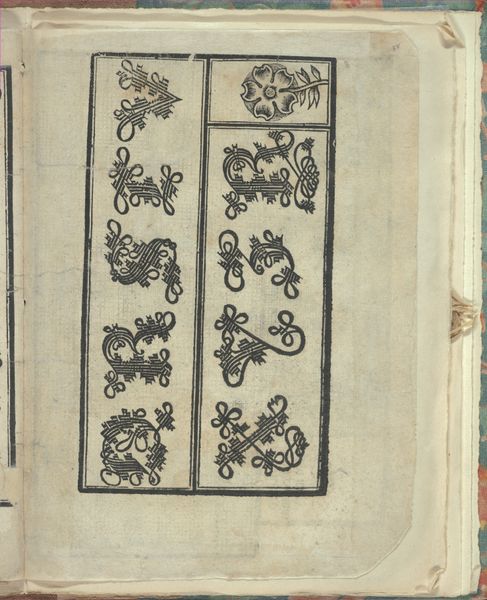
Opera Nova Universali intitulata Corona di racammi, page 18 (recto) 1530
0:00
0:00
drawing, print, etching, intaglio, engraving
#
drawing
# print
#
etching
#
intaglio
#
engraving
Dimensions: Overall: 8 7/8 x 6 7/8 in. (22.5 x 17.5 cm)
Copyright: Public Domain
Curator: Up next, we have a page from "Opera Nova Universali intitulata Corona di racammi," a 1530 print by Giovanni Andrea Vavassore, housed here at the Metropolitan Museum. It's a compilation of patterns intended for needlework and lace making. Editor: Oh, my! Immediately, I’m struck by the incredibly detailed, almost mathematical precision of the patterns. The interplay of black and white creates a striking graphic quality. It’s quite mesmerizing, actually. Curator: These books served a crucial role in disseminating design ideas throughout Europe. These patterns would have been adopted and adapted across various social classes. Looking at them now, one has to remember that textile production—needlework specifically—was very often associated with gendered expectations and, at times, used as a vehicle to exert agency. Editor: Absolutely. Focusing on its form, I’m seeing this rigid grid structuring both the floral motifs and geometric shapes; however, its aesthetic goes beyond functionality. Semiotically speaking, we’re examining the relationship between signs; for example, a viewer can see both a floral depiction but also its meaning: growth, natural beauty, femininity— Curator: True. Furthermore, the repetitive designs offered accessible opportunities for creativity to both professional artisans and those working in a domestic context, effectively democratizing art production in a way previously unseen. The motifs also reflect the cultural influences circulating at the time: classical, floral, etcetera. It tells us about trade and interactions with global material culture during the Renaissance. Editor: A perfect balance of complex aesthetic patterns and clear instructions for replication, allowing designs to quickly spread beyond a single place of origin! This page is an impressive specimen of applied art and a functional demonstration of both form and cultural values coexisting. Curator: Yes, and it illustrates that the application of “pattern and decoration” shouldn’t preclude our ability to consider intersectional political and economic context—quite the opposite! Editor: I agree. Its accessible formalism contributes to the richness and depth of this page.
Comments
No comments
Be the first to comment and join the conversation on the ultimate creative platform.
